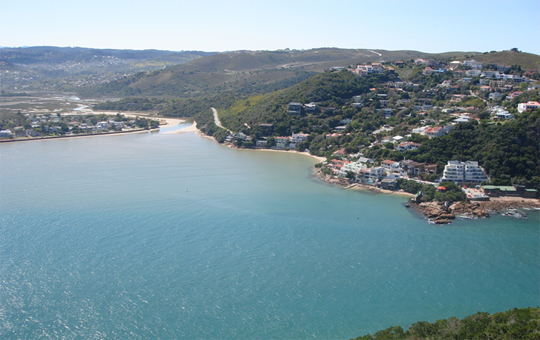Earlier this month, several spots along the Knysna Estuary were declared unsafe for recreational use due to high levels of E. coli bacteria that were found to be present in the water. The results of newer water samples collected from the estuary on March 18 indicate that the water in most of these areas is once again safe for visitors to make use of.
Water in the following areas, however, remains unsafe for use: the Ashmead Channel, Queen Street, the Train station, and Bongani.
“The Ashmead channel is not safe for use for swimming, bait collection, fishing or wading at present. This extends from the areas adjacent to Loerie Park, Cathy Park and up to the area next to Monk’s Caravan Park. The Thesen island waterway on the Ashmead side is also not safe for use,” SANParks said in an official statement. “Users of the estuary are encouraged to use compliant sites with the Department of Water Affairs guidelines including the Heads, Bollard Bay, the Point, Salt River, Crabs Creek, the Waterfront, the main channel, and Belvidere. SANParks’ deepwater samples indicate areas are compliant and confirm that the deeper waters and main channel are safe for use.”
Weekly sampling of the water will be conducted by the Garden Route District Municipality, and this will fall in line with the tidal flow. “We are expecting a flush in two to three days and will definitely continue to sample thereafter,” SANParks said.
SANParks has also erected signage at four spots around the Knysna Estuary to warn recreational users not to fish, collect bait or swim in the water at the demarcated areas.
Notices have been issued to tourism establishments surrounding the areas of concern to enable them to warn guests of the unsafe areas of the estuary. SANParks has also sent out regular ranger patrols to the affected areas to warn people about the dangers of using the water.
“[An] investigation into the causes of oil and grease that have entered the Wastewater Treatment Works (WWTW), causing bacteria to die off and the WWTW to release high loads of E.coli into the estuary has led the Knysna Municipality and Garden Route District’s Health division to sample and check all pump stations,” James McCarthy, Garden Route District Municipality’s Health Division spokesperson, said.
“We physically checked all the pump stations to find the cause. We have also sent notices to establishments closest to the stations found to have high levels of oil and grease to request proof of proper disposal of oil stores.”
Apart from this joint investigation, Knysna Municipality has tackled the problem at the WWTW by introducing an oil-eating enzyme into the system, while regularly dosing the WWTW with beneficial bacteria from the Brenton-on-Sea waste water works.
“A pre-directive was issued by the Breede-Gouritz Catchment Management Agency (BGCMA) to the Knysna Municipality subsequent to the spill from the WWTW. The Municipality will be given an opportunity to provide further action plans to rectify the situation. According to the Knysna Municipality, the good news is that oil and grease counts in the WWTW are a lot lower since the investigation into the matter two weeks ago,” McCarthy said.
The BGCMA has also elected to collect more chemical samples, and these will be tested for pH levels, ammonia, nitrates, and phosphates levels in the water.
“SANParks has also committed to continue with deepwater samples although they’ve come out positive,” SANParks said. “In addition, we’ve committed to reviving and chairing the Knysna Estuary Pollution Committee to meet on a weekly basis to tackle this and any future incidents so that we protect the Knysna estuary’s unique biodiversity and tourism value.”
The organisation added that it has also taken deepwater samples and results look positive. This means that animal and plant life in those areas were not affected by the spikes, including the Knysna seahorse and the Knysna Gobi.
Picture: SANParks






